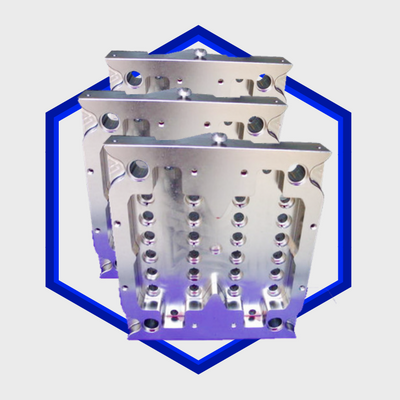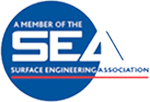Porosity of Nickel Plating
.png)
.png)

We recently had a customer who was concerned about the porosity of an Electroplated Nickel finish for an application within the marine industry. So what is porosity, why is it undesirable and what is the best finish to combat against this?
Porosity is the measure of small voids/pours within a surface. It is an all-encompassing term that relates to a variety of pores all of which will be microscopic in size but will vary with shape, size, morphology and frequency. These are all represented as either a percentage amount or a number between 0 and 1.
Pores are undesirable as although they may be small, they still lower the overall tensile strength of the metal, may grow depending on the conditions, and if on the surface will accelerate the rate of corrosion. There can be several factors that may lead to porosity including the material used and manufacturing process. In general terms metal finishing will not solve existing porosity issues with a metal but may delay its effect through isolation of the metal from its environment.
In the case of Electro-Plated Nickel, it is no ‘worse’ in terms of porosity than other metal finishing options. Any porosity issues can usually be solved with a slower immersion time, thicker deposit and utilising levellers and brighteners to ensure a more even distribution of the Nickel itself. In terms of a marine environment though, it may not be the right option and instead we recommended Electroless Nickel with a High Phosphorus content.
Electroless Nickel is an autocatalytic process were Nickel Ions are reduced using a Sodium Hypophosphite Solution. This means that the Nickel acts as a catalyst for the plating reaction, without the need for electricity. (as its name suggests) The major advantages of this process is that it will form evenly on a component, despite an uneven surface. The Phosphorus can be adapted depending on the application, with a High Phosphorus content of around 10-12% being corrosion resistant against the widest range of chemicals, most noticeably acid. The structure of the deposit is thick, dense and crystalline in nature, with very little in the way or pores.
This process is increasingly popular for marine environments for just this reason, not only can it provide a protective barrier around the entire component, but once built up above 25 microns should be thick enough to resist a harsher environment.
Silchrome provide both Medium and High Phosphorus Electroless Nickel and are fully ISO 9001 AND 14001 accredited. We carry out a wide range of metal finishing processes from our modern facility in Leeds, West Yorkshire.




